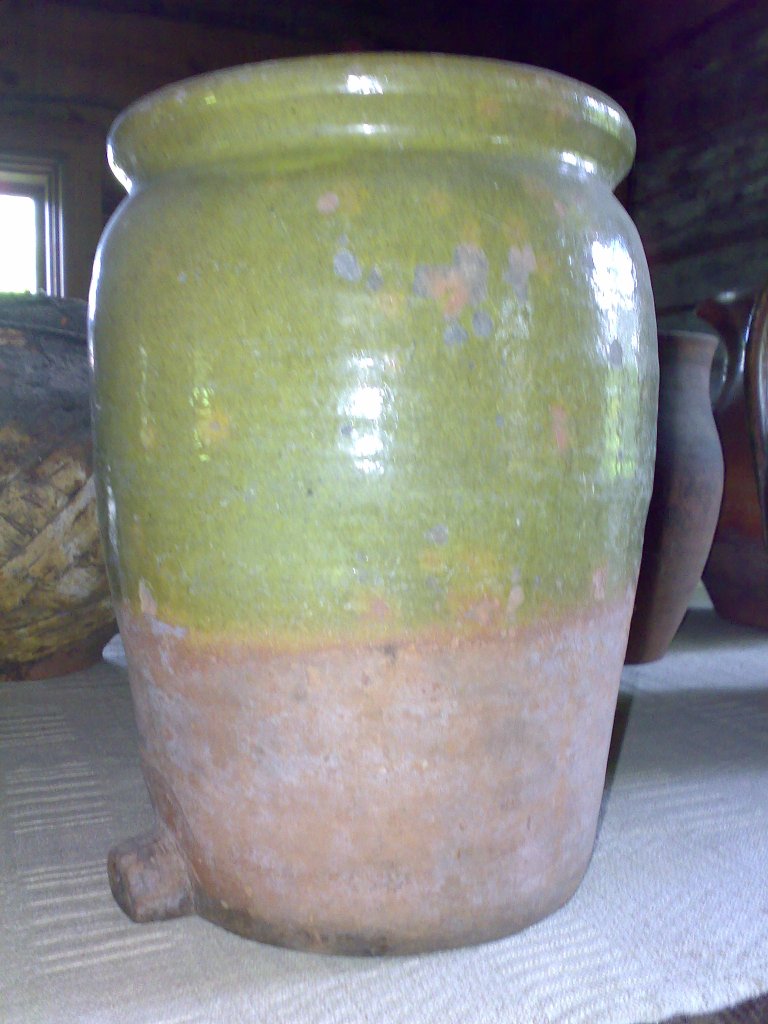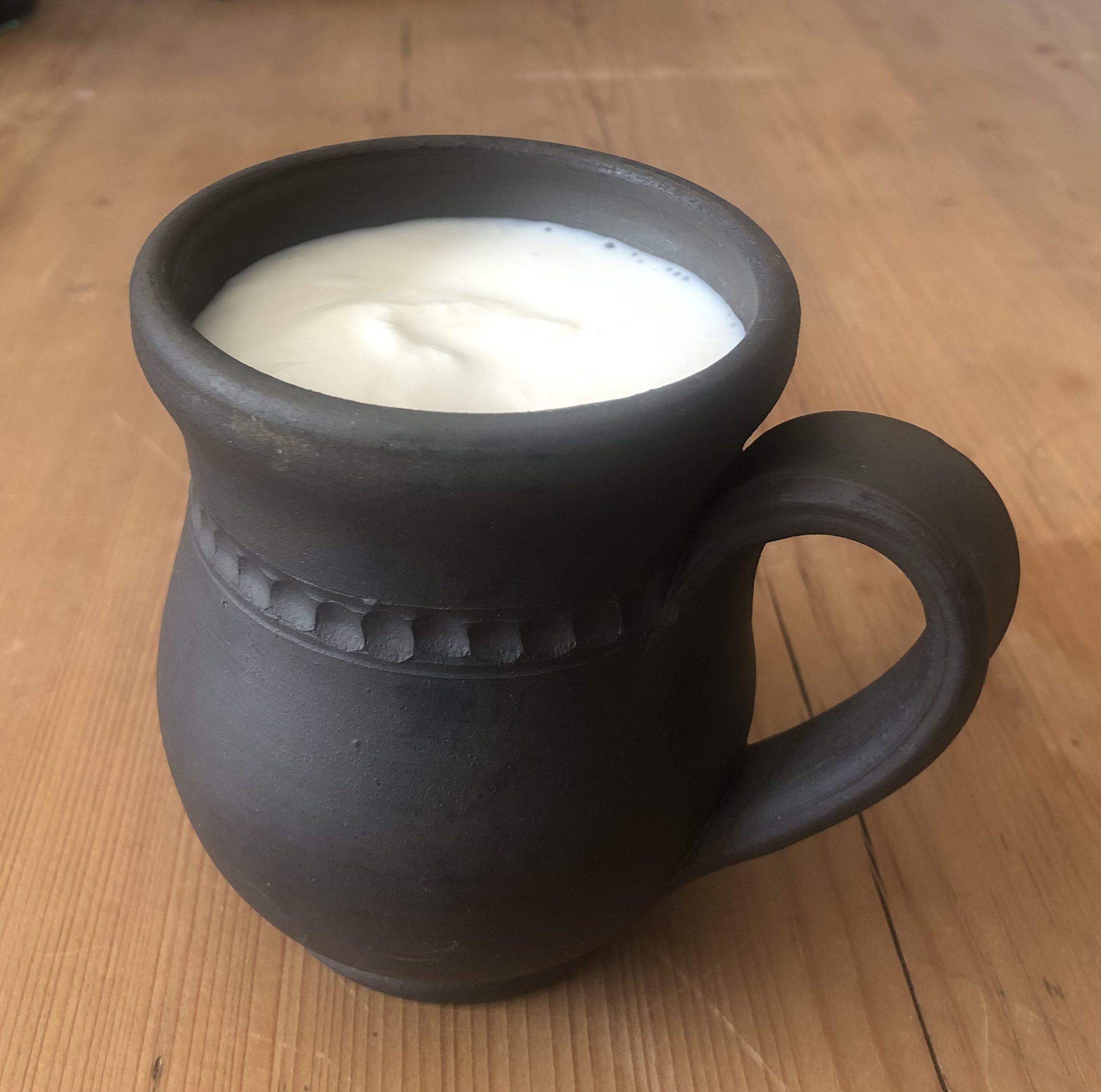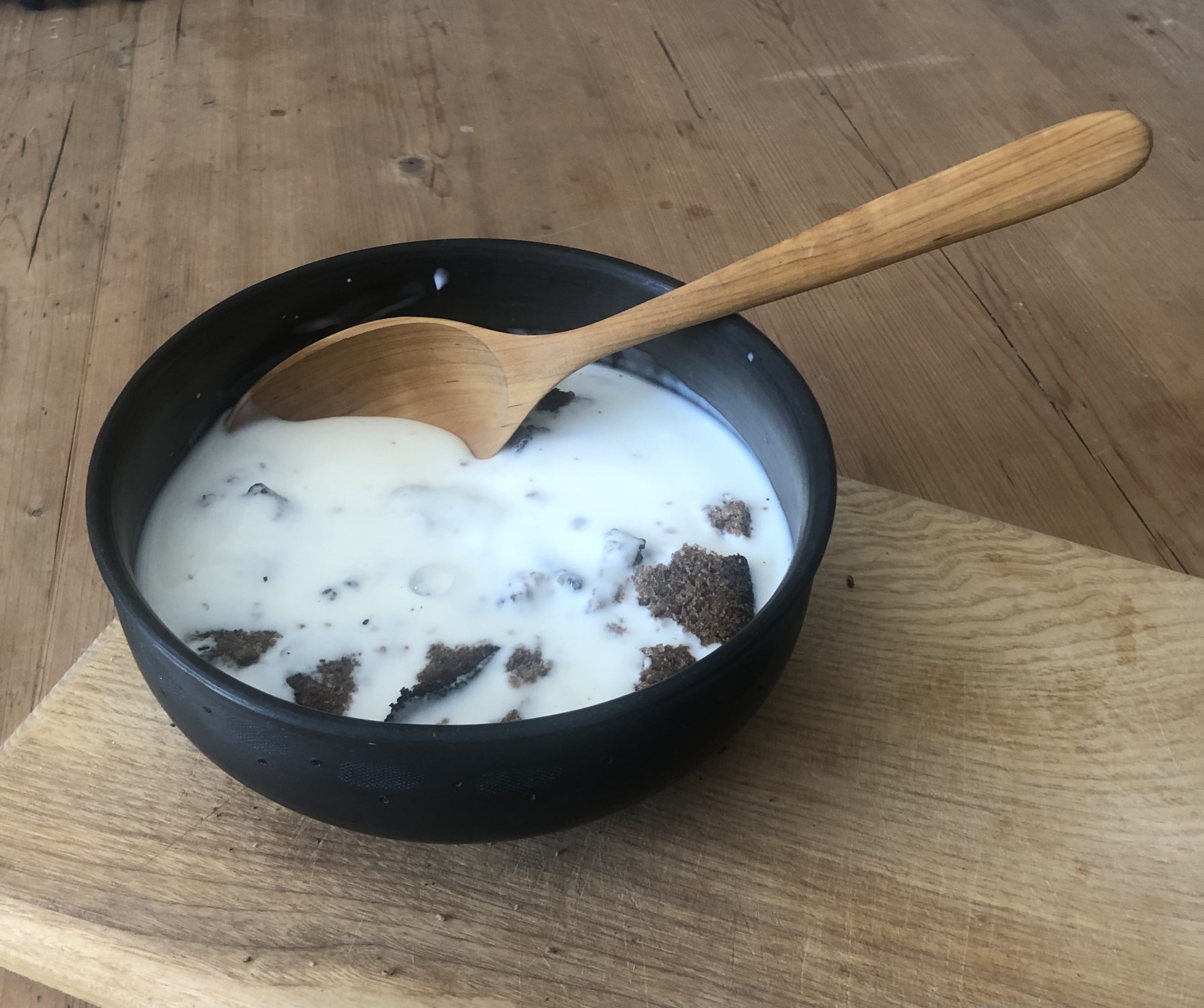Editor’s Note: In our on-going cooperation with Tatiana Minniyakhmetova of The Ritual Year Working Group (S.I.E.F.), who has connected the AIMA to her colleagues in several countries, here is another installment in our series on yoghurt or yoghurt-like foods, this time from the wealth of traditions in Latvia by Aīda Rancāne.
Traditional dairy products in Latvia were sour milk, cream, curds, butter and cottage cheese. Of this range of dairy products, the most used product of Latvian farmers was sour milk. It was prepared very simply. The milk was allowed to curdle, then collected in containers – about 3 litres in wooden buckets or clay pots, in which it was allowed to settle. The top layer – cream – was skimmed from the curdled milk and served with the same dish at the table. Milk processing, based on fermentation, was suitable for the temperate climate of the Baltics, because fermentation took place slowly. Through this process, the milk fat separated nicely and settled on the top layer. Milk fermentation was also determined by economic conditions. Because the milk yield of the local cows was low the milk would be stored, so that it would be possible to collect enough milk to make curds and cream.

Fig. 1. a ķērne, Courtesy Wikiwand “Latvia’s Pottery” at https://www.wikiwand.com/lv/Latvijas_podniec%C4%ABba#Media/Att%C4%93ls:%C4%B6%C4%93rne.jpg
In order to collect a large quantity of sour milk, it was poured into a larger container called a ķērne, and the curdled milk was added to it several times. After a while, the cow’s milk became very sour. To reduce acidity, water or milk was added to sour milk before consumption. It was possible to obtain such a sour milk product in this natural way without additives, because the fermentation of unpasteurized milk is stimulated by lactic acid bacteria. In Latvian folklore, a belief has been preserved: “If the milk does not ferment, then you should give a container of milk to a pig to sniff and smell around it, then it will ferment”.

Fig. 2. Courtesy Aīda Rancāne
Most sour milk was consumed for drinking. It was one of the primary drinks in the summer, for example, in the haymaking work in the distant meadows. A teaspoon of honey was added to the cup of sour milk and whipped. Sour milk was considered good when it was dense, of consistent texture, with a pleasant sour taste. In various regions of Latvia, sour milk was also used to make thicker drinks or dishes that were consumed with spoons. Drinking sour milk from cups was introduced only in the 20s and 30s of the 20th century.

Fig. 3. Courtesy Aīda Rancāne
In Kurzeme [or Courland in western Latvia], sour porridge skābputra was popular – acidified barley porridge with lumps of sour milk. In Vidzeme, the favourite was kultenis or skābums – flour mixed in water and allowed to rise, then sour milk was added. A well-known combination in Latvia was pūtelis, kami, sutnes – flour of roasted grains (rye, barley, oat grains, peas, beans) mixed with sour milk. Sour milk was also eaten by crumbling bread into it and pouring it over boiled peas and beans. Sometimes cottage cheese and pieces of fried herring were mixed into sour milk. If beets, turnips or other vegetables were cut into sour milk, then in Latgale such a dish was called batviņa or kolodņiks, but in Vidzeme it was called ķēpene. If a little cream and chopped green onions were added to sour milk, it was poured into a bowl and used to soak boiled potatoes or turnips.

Fig. 4, rye bread crumbled into a bowl of sour milk. Courtesy Aīda Rancāne
In the territory inhabited by the Balts, there is evidence of the use of milk in human nutrition as early as the 1st century BC. Archaeological searches found bones of milking cows and clay milk jugs. Also, the Latvian word for milk – piens – itself has an ancient Indo-European meaning – ‘to be fat, swell, plump’. The dairy cattle of that time were small and gave little milk, so milk, including sour milk, was a seasonal product that supplemented the diet primarily in the summer.
Author: Aīda Rancāne, Leading researcher of the Institute of Philosophy and Sociology of the University of Latvia. Riga, Latvia.
Sources
Latviešu tautas ēdieni. Latvijas vēstures institūta etnogrāfisko ekspedīciju materiāli. [Latvian folk dishes. Ethnographic expedition materials of the Institute of Latvian History.] Compiled by Linda Dumpe. Riga: Apgāds “Zinātne”, 2009. pp. 129-130, 137-140.
